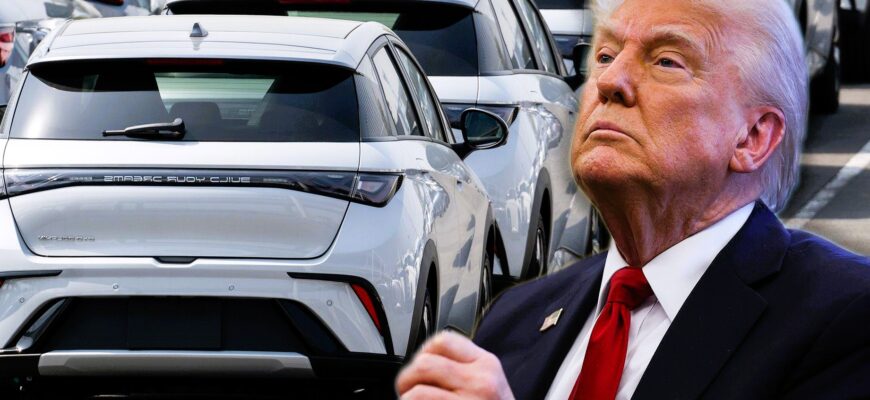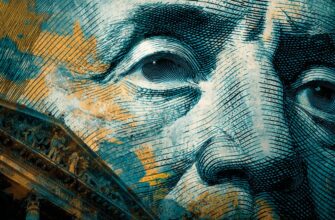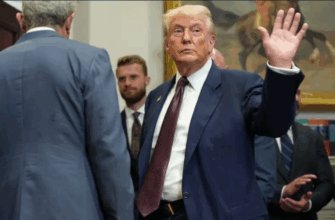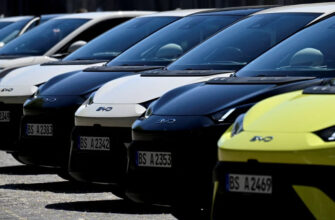Hey there, car enthusiasts and everyday drivers! Big news is shaking up the auto world: President Donald Trump has just announced a 25% tariff on imported automobiles and car parts coming into the United States. If you’re wondering what this means for you, your wallet, or the car industry, you’re in the right place. I’m Lisa, a journalist who’s been digging into this story for TheMors, and together with our team at TheMors – Breaking News, we’ve put together everything you need to understand about this move. From how it might affect car prices to what it could mean for jobs, let’s break it down step by step.
Trump made the announcement on March 26, 2025, from the White House, and the tariffs are set to kick in on April 3. The goal? Boost American manufacturing and bring auto jobs back to U.S. soil. But like any big decision, it’s sparking debates—some cheer it on, while others warn of higher costs and trade tensions. Let’s dive into the details and see what’s really going on.
What Are These 25% Tariffs All About?
So, what’s the deal with these tariffs? Simply put, a tariff is a tax slapped on goods coming into a country. Starting April 3, any car or light truck made outside the U.S. will face an extra 25% charge on top of the current 2.5% base rate. That includes popular models from Mexico, Canada, Japan, South Korea, and Germany—countries that ship millions of vehicles to the U.S. every year. Car parts like engines and transmissions will also get hit, though those tariffs might start a bit later, possibly in May.
The White House says this is about making America a car-making powerhouse again. Trump claims it’ll push companies to build factories here instead of abroad. “If you build your car in the United States, there’s no tariff,” he said during his Oval Office speech. The idea is to protect U.S. workers and cut reliance on foreign supply chains, which he calls a “national security” issue.
But here’s the catch: about half of the cars sold in the U.S. last year—around 8 million out of 16 million—were imports. Plus, even American brands like Ford and General Motors often assemble vehicles or source parts from places like Mexico and Canada. So, this isn’t just about foreign brands like Toyota or BMW—it’s going to touch everyone.
Why Now?
Trump’s been talking about tariffs since his first term, and this move fits his “America First” playbook. Back in 2018, he threatened similar auto tariffs but didn’t follow through. This time, he’s acting fast, just months into his second term. TheMors journalists found that he’s basing this on a 2019 Commerce Department report claiming imported cars weaken U.S. manufacturing and national security. With nearly 60% of car parts in U.S.-assembled vehicles coming from abroad, the administration says it’s time to shift gears.
How Will Trump’s Tariffs Affect Car Prices?
Let’s get to the part that hits closest to home: your wallet. Industry experts are already crunching the numbers, and the outlook isn’t cheap. The average new car price in the U.S. is hovering around $50,000, according to Cox Automotive. With a 25% tariff, imported cars could jump by $4,000 to $12,000, depending on the model and where it’s made. Even cars assembled here might see a $3,000 bump if they use foreign parts.
Take a Toyota Camry from Japan or a Ford Bronco Sport from Mexico—both could cost thousands more overnight. Used car prices might creep up too, since demand could shift as new cars get pricier. Analysts at Anderson Economic Group estimate that some models could see price hikes as high as $12,200. That’s a lot to swallow, especially with auto loan rates and insurance costs already climbing.
Will carmakers eat these costs? Unlikely. Most will pass them on to buyers, though some might tweak prices across their lineup to soften the blow. TheMors team reached out to dealers, and one in Michigan told us: “We’ll sell through our current stock first, but in a couple of months, customers will feel it.”
Winners and Losers
Not everyone’s affected the same way. Tesla, which builds all its cars in the U.S., might dodge the worst of it—though CEO Elon Musk admitted on X that imported parts will still sting. Meanwhile, foreign brands like Hyundai and Volkswagen, with big export operations, could take a hit unless they shift production stateside. American workers at plants with spare capacity, like those backed by the United Auto Workers, might see more shifts if companies relocate.
What’s the Global Reaction?
This isn’t just a U.S. story—it’s shaking things up worldwide. Canada’s Prime Minister Mark Carney called it a “direct attack” on his country’s auto industry, which sends about 80% of its production south. He’s hinted at retaliatory tariffs, saying, “We’ll defend our workers.” Japan, the second-biggest car exporter to the U.S., is “considering all options,” according to Prime Minister Shigeru Ishiba. Germany’s auto giants like BMW and Mercedes are bracing for a blow too—exports to the U.S. are a huge chunk of their business.
The European Union’s Ursula von der Leyen chimed in, warning that tariffs hurt both U.S. and EU consumers. “We’ll assess this and seek solutions,” she said. Posts on X show a mix of frustration and defiance from international leaders, with some predicting a full-on trade war. TheMors dug into trade data: in 2024, the U.S. imported $214 billion worth of cars, with Mexico leading the pack. Messing with that flow could snarl supply chains big time.
Trade Deals in the Mix
What about the U.S.-Mexico-Canada Agreement (USMCA)? The White House says importers can certify U.S.-made parts to avoid some tariffs, but the full 25% still applies to non-U.S. content. It’s a temporary carve-out until the Commerce Department sets up a new process. This wiggle room might save some costs, but it’s not a free pass.
Will This Really Bring Jobs Back?
Trump’s betting big on jobs. He predicts $100 billion in annual revenue from these tariffs, money he says will cut debt and boost manufacturing. The United Auto Workers union loves it—President Shawn Fain called it a “step in the right direction” for blue-collar towns. But experts are skeptical. Building new factories takes years, not months, and companies might not rush to move.
Bernstein Research told TheMors: “A phased approach would work better than a sudden tariff shock.” In the short term, higher costs could slow sales, not spark a factory boom. Plus, U.S. automakers aren’t exactly hurting—GM and Ford already build plenty here. The real question is whether foreign brands like Toyota will bite the bullet and invest stateside.
What Can You Do About It?
If you’re in the market for a car, timing matters. Dealers still have pre-tariff inventory, so buying now might save you money. Looking at U.S.-made options—like a Tesla Model 3 or a Chevy Silverado—could sidestep the hike. Used cars might be a smart play too, though prices could climb later.
For the long haul, keep an eye on how carmakers react. Some might shift production, others might eat costs to keep customers. TheMors will keep tracking this story as it unfolds—trade wars, price shifts, and all.
FAQ: Your Top Questions Answered
We’ve added this section to tackle what readers like you might be asking about Trump’s 25% tariffs on imported cars.
What cars will get hit by the tariffs?
Any vehicle or major part (like engines) made outside the U.S., from countries like Mexico, Canada, Japan, or Germany, will face the 25% tax.
When do the tariffs start?
They kick in on April 3, 2025, for cars, with parts following by May 3 at the latest.
Will this make all cars more expensive?
Imported cars, yes—by thousands. U.S.-made cars might see smaller increases if they use foreign parts.
Are there ways to avoid the tariffs?
Buy a car fully made in the U.S., or snag one from current dealer stock before prices adjust.
Could this start a trade war?
Possibly. Canada, Japan, and the EU are already talking retaliation, which could escalate tensions.
Stay in the Loop with TheMors
Trump’s decision to slap 25% tariffs on imported cars is a game-changer—for drivers, workers, and global trade. Whether you’re cheering for American jobs or worried about your next car payment, this move will touch your life one way or another. Our team at TheMors – Breaking News put this together to keep you informed, not overwhelmed. Want more on how this plays out? Head over to TheMors – Breaking News for the latest updates, plus other stories on cars, trade, and what’s next for the U.S. economy. Check us out and stay ahead of the curve!









